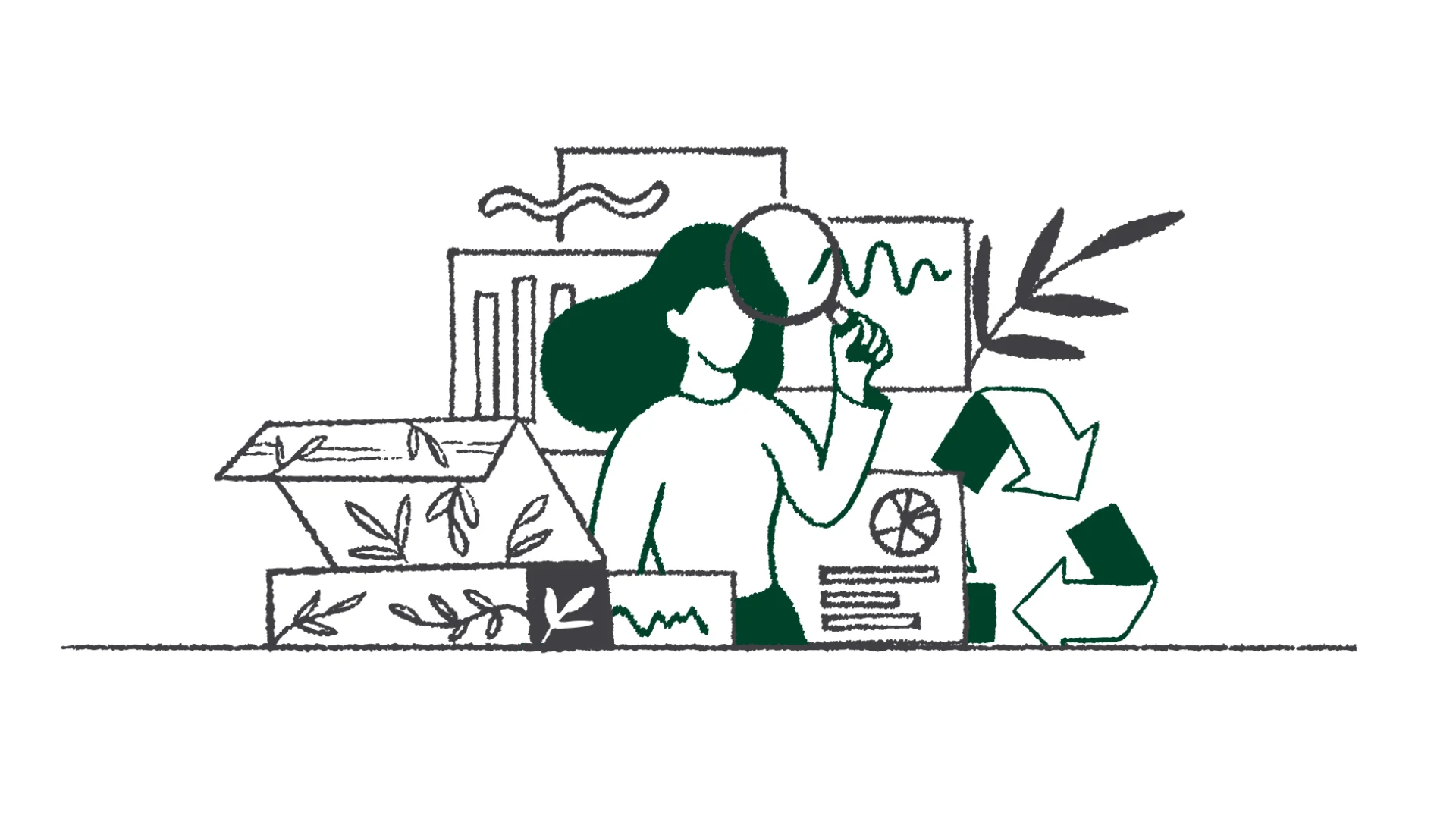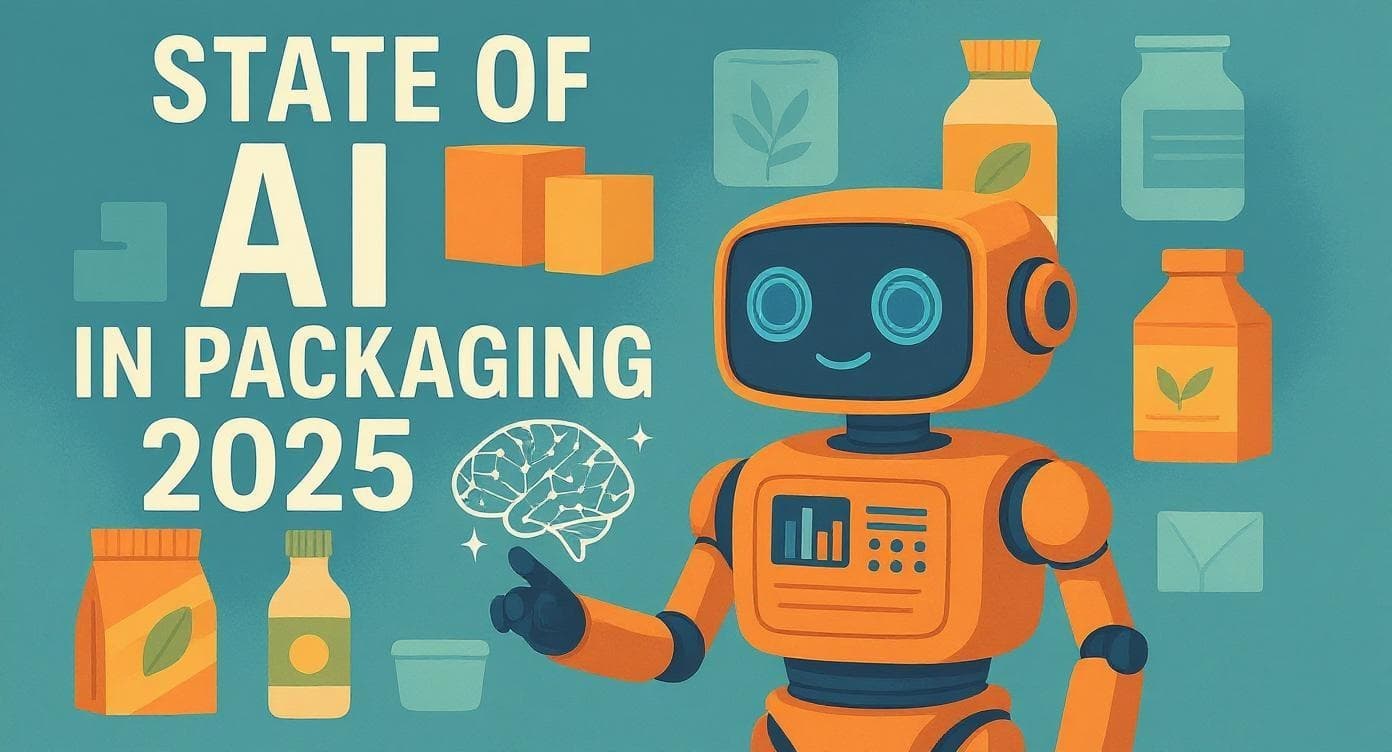Blog PostHow to avoid greenwashing in 8 steps
- Sustainability
- Innovation
Bryony CarragherNovember 3, 2021 - 6 min read

Sustainability is going from being a checkbox exercise to a business driving force. But your sustainability claims must match up with what your product or service actually does. Otherwise, you could find yourself at the centre of a greenwashing scandal. This could mean losing customers through broken trust, or even facing legal trouble and fines.
Knowing how to avoid greenwashing is now key to any business strategy. But it's not just about avoidance. It can be an opportunity to embrace transparency and improve the sustainability of your supply chain. This, in turn, can attract new customers and investors looking for value-aligned brands.
So below, we explain what greenwashing is, how to spot it and eight ways you can avoid greenwashing in your business.
3 different types of greenwashing
You might think that most greenwashing happens with malicious intent. Whilst this is often true, it’s also possible to commit greenwashing unknowingly. Whatever the cause, no business wants to be caught red-handed. So it’s important to be clued-in on the three main types of greenwashing.
1. Unintentional greenwashing
This type of greenwashing might be accidental, but it’s really a result of negligence. It happens when a company makes ambiguous or misleading claims without understanding the data or regulations behind them.
2. Partial truths
Imagine an oil company publicising its wind farms whilst continuing harmful drilling projects on the quiet. This is known as selective disclosure, giving partial truths or greenlighting. It’s where you highlight one feature to draw attention away from harmful practices elsewhere in your business.
Selective disclosure can mislead customers. It breaks their trust and harms your reputation irreparably. This is why transparency is crucial.
3. Lies and intentional misrepresentations
Lies and intentional misrepresentations are the most malicious form of greenwashing. They’re a deliberate attempt to mislead consumers and other stakeholders. This includes using symbols, logos or data that paint you in a more sustainable light than the reality.
An example of this is the Volkswagen emissions scandal. Their vehicles were emitting up to 40 times the amount of dangerous nitrogen oxides allowed. But rather than addressing this, Volkswagen installed devices that helped them cheat the emissions tests. They knowingly misled customers and made them complicit in violating EU pollution standards. Legal trials are ongoing, and the company has already paid out billions in fines and settlement fees.
How greenwashing can harm your business’s reputation
Volkswagen is a clear example of how financially damaging greenwashing can be. And in today’s digital world, you can’t be too careful. Thanks to social media, information spreads fast. It’s also open to interpretation and hangs around long after the event.
So in the case of greenwashing, whether accidental or intentional, prevention is always better than a cure.
8 steps to avoid greenwashing
1. Be transparent
Being transparent in business means laying everything out on the table. This includes your progress, your shortcomings and what you’re doing to improve. Sure, it’s natural to want to highlight the good and focus less on the not-so-good. But this misses the big picture and can misrepresent your business. Before you know it, you’re greenwashing.
Transparency can make or break your customers’ trust. In fact, 94% of customers said they’d be loyal to a brand that was completely transparent. A good example of transparency in action is the menswear company ASKET. They include an “impact receipt” with orders to help customers understand how much CO₂ was emitted and how much water and energy was used to make their garments. They also show customers how many wears they can expect before needing a replacement.
ASKET empowers their customers by helping them understand exactly what they’re buying. But embracing transparency isn’t just about honesty. It can also be an opportunity to examine your total environmental impact. And once you know where you can improve, you can set targets to serve as your sustainability roadmap.
A great way to do this is to release an annual impact report. Another is to publish your company’s Environmental, Social and Governance (ESG) score. Information like this helps your stakeholders understand your environmental and social impact and the actions you’re taking to reduce them. There’s no doubt that these are big jobs. But you can bring in experienced consultants and writers to take the task off your hands and make sure it’s done right.
Being transparent has the added bonus of attracting new customers and investors. By becoming more resilient to future regulations and the effects of climate change, you become a safer business bet in their eyes.
“Transparency breeds accountability, which is a big part of what drives change and improved results.“ Gary Steele, Group CEO of TES.
2. Conduct a full product life cycle assessment
A full life cycle assessment (LCA) allows you to understand your product’s environmental impact. Based on ISO standards 14040 and 14044, an LCA considers the environmental effects of a product or service throughout its entire life cycle. This begins from the extraction of raw materials to final disposal.
An LCA provides facts that back up your sustainability claims. You can then communicate with more scientific backing. In this way, you avoid making misleading or exaggerated statements and reducing your risk of greenwashing in the process.
For example, think about the recyclable plastic bin bag. The bag itself is recyclable, but its purpose is to contain waste. So, it's more likely that the bag will be sent to landfill or incinerated along with its contents. In other words it’s only recyclable if it isn’t used for what it was made for — go figure. Claiming it’s recyclable without mentioning this is misleading or in other words, greenwashing.
So, conduct a full LCA that looks at every stage in a product’s life. You can then avoid misleading messages and target areas for improvement.
3. Create more sustainable partnerships
Supply chains today remain inefficient, complex and fragile for the millions of businesses that rely on them. In fact, over 80% of greenhouse gas emissions from a typical consumer company comes from their supply chain. And because they’re so complex, it can be hard to know just how sustainable your supply chain is. It’s even harder to verify claims that your suppliers and other partners make. With this lack of visibility, it’s easy to make claims that aren’t actually true in the real world.
So you risk greenwashing if there are areas in your supply chain that don’t match up with your sustainability claims. Like Ikea, which was accused of greenwashing in 2018. The company claimed their furniture was made with wood from responsibly managed forests. But this wasn’t true across the board, as some of its furniture was actually being made with wood from protected ancient forests. No one took responsibility for the illegal, environmentally damaging activity. Meanwhile, the whole issue negatively affected public opinion of all parties involved.
This is why it’s important to work with a packaging partner like Sourceful. We only work with vetted suppliers who adhere to UK and EU regulations, regardless of where they are in the world. And we review their practices annually to make sure their (and our) standards stay high year after year.
4. Be specific and avoid vague buzzwords
“Eco-friendly,” “sustainable” and “green” are all words you think you’d like to see in a product description. But without explanation, vague terms like these can mislead consumers.
This is because the most sustainable thing any of us can do is not extract or produce any products at all. So whilst this isn’t practical in the real world, it does mean that none of our actions can be called truly sustainable. And under the UK’s Green Claims Code, anything that exaggerates any product’s positive environmental impact is greenwashing. So the key to avoiding this is to be specific with your terminology.
For example, imagine you’ve switched from a poly mailer bag to a recycled mailer bag. But, claiming it’s “sustainable” is misleading, as nothing is truly sustainable. Instead, give customers accurate information and include numbers. We’ve done the research and we know that using our recycled mailer bags can reduce your carbon footprint by up to 30% compared to a virgin poly mailer. This specific, reliable information is what you want to give your customers. They’ll appreciate your transparency and reward you with their loyalty.
And this is why we provide live carbon data when you design your packaging online with Sourceful. It helps you to confidently state how much CO₂ you’re saving compared to a less sustainable alternative. That way, your messaging is clear, accurate and, most importantly, isn't greenwashing.
5. Be aware of what your branding signals to customers
What would you think if a company like Shell, with its signature red and yellow branding, suddenly switched to leafy green imagery? You’d probably think they’d made some changes in the spirit of sustainability. And wouldn’t you feel misled if that wasn’t the case?
Branding that draws attention to your sustainability efforts is, of course, a good thing. That’s as long as you're actually taking steps towards reducing your carbon footprint. And that you’re not selectively drawing attention to or concealing certain features. Otherwise, your customers may feel deceived and suspect you of greenwashing.
So, ensure your packaging’s colours, logo, images and labels can’t reasonably be misinterpreted. For maximum clarity, include written instructions alongside your labels, such as how to recycle.
6. Choose credible labels and certifications
Environmental labels and certifications show that a product or service follows environmental regulations. And these need to come from reputable third parties, such as the Rainforest Alliance, Fair Trade Foundation or B-Corp.
At Sourceful, we offer packaging made with Forest Stewardship Council (FSC) certified materials. The FSC aims to protect forests and guarantee responsible resource extraction. So, choosing FSC certified packaging and products is a step towards reducing your environmental impact. And you can then include an FSC label on your packaging, which assures your customers that you support more sustainable practices.
7. Partner with people creating true change
Tree planting is one of the most common ways to offset your carbon footprint. And in one sense, it’s great because tree planting has many social and economic benefits. But whilst trees are vital in stabilising ecosystems, reforestation projects aren’t a panacea for the climate crisis.
This is because the forests most effective in removing CO₂ from the atmosphere are the most mature ones with a whole variety of species. In contrast, forests grown under reforestation projects may not be diverse enough, limiting their functionality. And even if they were, trees take decades to mature. So they’re not effective in removing carbon from the atmosphere in the short or long term.
Offsetting by planting trees is a useful complementary tool to reach your sustainability goals. But only if it’s combined with solutions to reduce emissions in the first place. Otherwise, it would be like pumping out thousands of plastic bags and claiming it was okay because you’re planting 1000 trees that year. Tree planting can be a part of your impact-reducing toolkit, but it can’t be a justification to continue business-as-usual.
That’s why we created Sourceful Climate, a carbon removal platform that makes it easy for you to reduce your packaging’s carbon footprint. But crucially our partners go beyond short-term initiatives by permanently removing carbon from the atmosphere. So, you can claim with confidence that your carbon footprint reduction efforts make a difference.
8. Stay up-to-date with regulations
As the climate crisis worsens, governments around the world are racing towards net-zero goals. And this means you’ll be seeing more regulations under the Extended Producer Responsibility regulations, like the Plastic Packaging Tax.
To make sure you follow existing and new regulations, stay up to date and adjust your business activities accordingly. Your environmental impact claims will then be in line with your responsibilities, helping you avoid accidental greenwashing.
How to spot businesses that are greenwashing
The Green Claims Code checklist is a great tool for spotting greenwashing. And it’s a helpful self-assessment for you to run through too:
- Are all claims clear, understandable and accurate?
- Is there any messaging that could mislead stakeholders?
- Is there up-to-date, trustworthy evidence to back up the claims?
- Are any comparisons made fairly, using like-for-like products or services?
- Are there any exaggerations or false statements about the environmental impact?
- Are general labels (e.g. green, sustainable or eco-friendly) backed up by evidence?
- Is information that can’t be displayed accessible in another way, with a web page or a QR code for example?
- Is information concerning durability and disposability explained clearly?
- Does the company avoid labelling standard features as environmental benefits?
- Do general labels (e.g. green, sustainable or eco-friendly) reflect the whole lifecycle?
- Does the claim tell the whole story or avoid misleading stakeholders about the overall environmental impact?
Avoid greenwashing with Sourceful
Whether intentional or accidental, greenwashing can damage your business and your reputation. But you can avoid it by embracing transparency and gaining visibility over your entire operation. From here, you can make changes and stay ahead of developing regulations.
Remember to always consult your legal team on what claims can be made and whether you have sufficient basis to make them. This way, you can make sure you’re aligned with all relevant regulations and government guidance on green claims, such as the Green Claims Code.
At Sourceful, we want to help you switch to more sustainable packaging without the risk of greenwashing. We work with vetted suppliers held to UK and EU environmental standards, whilst our Impact Engine gives you full visibility over your packaging’s carbon footprint. And when you offset your carbon footprint through us, you can rest assured you’re supporting meaningful projects that create long-lasting change.








